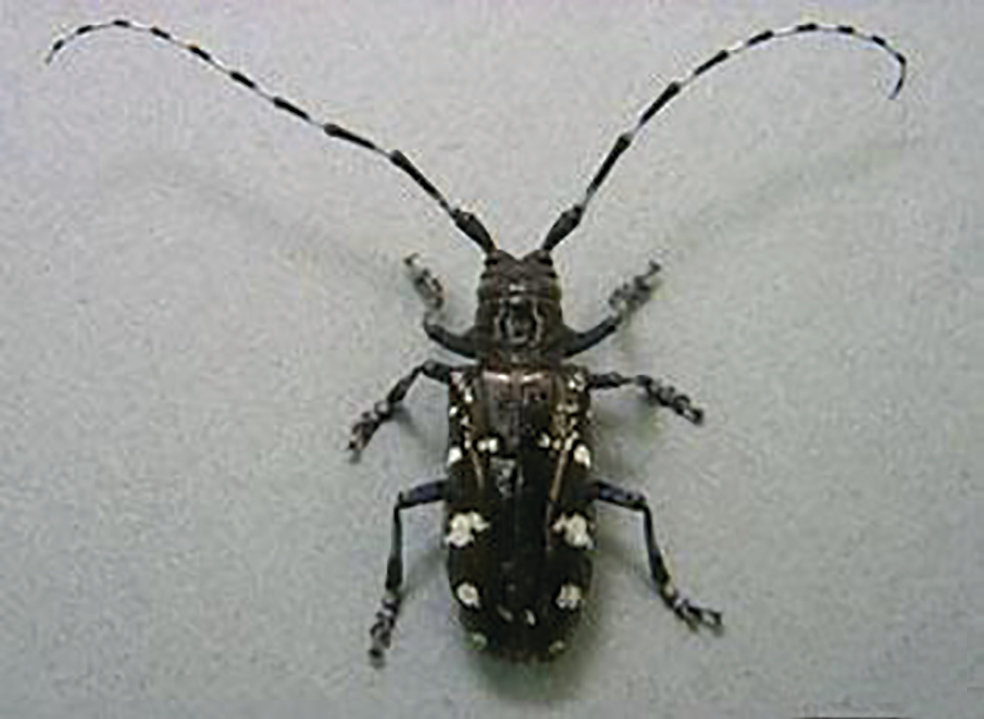Inspectors survey Lowcountry trees after invasive beetle discovered
PENDLETON - An invasive species of beetle discovered for the first time in South Carolina has state and federal officials conducting surveys in Charleston County to determine the extent of the insect's spread. The Asian longhorned beetle was found by a homeowner in Hollywood, who contacted Clemson University's Department of Plant Industry to report it.
A DPI inspector collected the insect for identification and conducted a preliminary survey of the trees on the property. At least four maple trees appear to be infested, and inspectors have captured live beetles.
"We were very fortunate that the residents reported it when they did," said Steven Long, assistant director of Clemson Regulatory Services who oversees DPI and invasive species. "We think it is confined just to this local area, but we are just getting started with our surveys."
Clemson's Plant and Pest Diagnostic Clinic and the USDA Animal and Plant Health Inspection Service's National Identification Services have confirmed the insect's identity.
The Asian longhorned beetle, Anoplophora glabripennis, is a wood-boring beetle that threatens a variety of hardwood trees, including maple, elm, ash, sycamore, poplar and willow. It is not a pest of the oak species that are more abundant in South Carolina.
As the beetle bores into the tree, it interrupts the flow of life-giving sap and weakens the tree, ultimately killing it. Infested trees also can become safety hazards, since branches can drop and trees can fall over, especially during storms.
South Carolina is the sixth state to detect an Asian longhorned beetle infestation. The pest has been eradicated from New Jersey and Illinois; eradication efforts are ongoing in New York, Massachusetts and Ohio with guidance from the APHIS Asian Longhorned Beetle Eradication Program.
Residents in the town of Hollywood and in surrounding Charleston County communities are encouraged to allow state and federal access to property to survey for the pest. They can also help by looking for the beetle and examining the trees on their property for damage beetles may have caused.
"The No. 1 thing we need is access to property in the inspection area," Long said. "Survey crews will be operating in the area for the next several weeks and possibly months as we determine the extent of the infestation. Landowners' cooperation is vital to ensuring this pest doesn't establish a foothold.
"The second thing we need is for people to help us look," he said. "Our inspectors are experienced in examining the tree for signs of the beetles' presence, but the more eyes we have looking for the insect and the more obvious damage it causes, the more likely we are to find it."
The Asian longhorned beetle is shiny black with small, white spots on its body and its abnormally long antennae. Adult beetles can grow an inch and a half long.
"There are some lookalikes, including a native sawyer beetle that has long - although not quite this long - antennae," Long said. "But the Asian longhorned is still rather unique. Personally, I've only seen one other insect like it."
The beetle's larvae feed by tunneling under the tree bark where they live through the winter, forming galleries in the trunk and branches. When mature, they chew their way out, creating round holes about 3/8 inch in diameter.
South Carolinians who think they have found the beetle may report it online at invasives@clemson.edu or by calling DPI at 864-646-2140.
They may also make a report by calling the USDA's Asian longhorned beetle hotline at 866-702-9938 or report online at www.AsianLonghornedBeetle.com.
If possible, take pictures. If you capture a suspicious insect, store it in a durable container and freeze it, which will help with identification.
To protect against the spread of this or other damaging insect pests, Long urges caution in moving firewood or other wood products. Even if no beetles are visible, an infestation may be spread by moving branches, logs, stumps, packing material, lumber, wood debris and trimmings.
More Articles to Read

